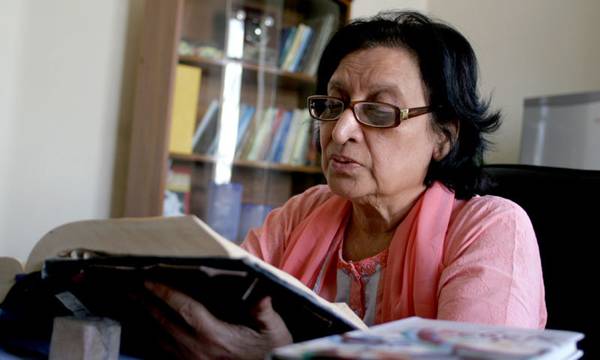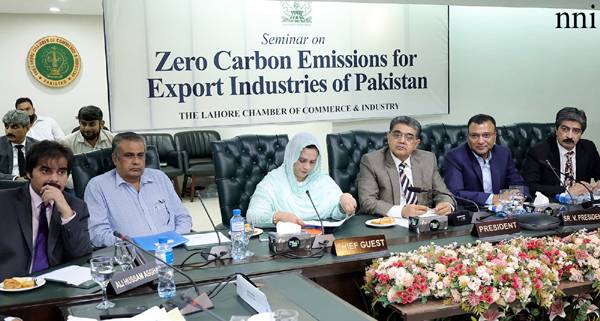
ISLAMABAD – The ministry of finance has noted that Pakistan’s economy is expected to sustain its recovery in early FY2026, supported by improved macroeconomic fundamentals and rising investor confidence.
“Large-Scale Manufacturing (LSM) is likely to maintain momentum in June 2025, driven by increased private sector credit offtake and expanding production activity. The rebound is expected to boost imports of raw materials and intermediate goods while supporting exports of value-added products,” the ministry stated in its monthly Economic Update and Outlook July 2025 released on Monday.
Strengthening domestic demand, a stable exchange rate, steady global commodity prices, and improved foreign demand are likely to enhance exports, remittances, and imports in July 2025, reinforcing external sector stability. Inflation is projected to remain within 3.5 to 4.5 percent, though risks from recent heavy rains may affect agricultural yields and supply chains. As FY2025 concludes, Pakistan’s economy has demonstrated clear signs of recovery and growing resilience. The economy sustained growth momentum at 2.68%, while inflation fell sharply to 4.5%, supported by a lower policy rate, exchange rate stability, and prudent macroeconomic management. The current account recorded a surplus of $2.1 billion — the first annual surplus in 14 years and the largest in 22 years — reflecting improved external balances, stronger exports and remittances, and rising foreign exchange reserves. The fiscal deficit has been contained at 3.1% of GDP for July–May FY2025, showing improved fiscal discipline and resource management. These improvements have strengthened market confidence, eased currency pressures, and created space for monetary easing to support growth.
Building on this momentum, FY2026 begins with a renewed focus on sustainable and inclusive growth. Policy priorities include continued fiscal consolidation, enhanced revenue mobilization, modernization of the agriculture and industrial sectors, and improvements in the business climate and human capital development. Social protection and climate resilience will also remain integral to aligning near-term economic actions with Pakistan’s long-term development goals. Accordingly, real GDP is expected to grow by 4.2% in FY2026, alongside continued price stabilization.
Prudent expenditure management and better resource mobilization helped in improving the fiscal indicators. During Jul-May FY2025, the fiscal deficit reduced significantly to 3.7 percent of GDP from 5.0 percent recorded last year. Similarly, primary surplus increased to 3.1 percent of GDP (Rs.3,594.6 billion) during Jul-May FY2025 from 1.5 percent (Rs.1,620.5 billion) last year due to contained growth in non-markup spending. Total expenditure grew by 16.3 percent to Rs.14,053.1 billion from Rs.12,086.4 billion last year. The rise in expenditure is primarily attributed to a significant increase in development spending (44.1%) compared to a moderate increase in current expenditures (13.1%). A substantial increase in both tax (25.9%) and non-tax collections (62.7%) triggered a significant rise in net federal revenues which grew by 41.1 percent to Rs.8,750.9 billion during Jul-May FY2025 from Rs.6,202.6 billion last year. During FY2025, FBR tax collection grew by 26.3 percent to Rs.11,744.3 billion from Rs.9,299.1 billion last year. The increase is attributed to 32.8 percent increase in FED, followed by 27.8 percent increase in direct tax, a 26.4 percent increase in sales tax, and 16.4 percent increase in customs.
Pakistan’s current account recorded a surplus of $328 million in June 2025, bringing the total surplus for FY2025 to $2.11 billion marking the first annual surplus in 14 years and the largest in 22 years. This compares sharply with a deficit of $2.07 billion in FY2024. The improvement was driven by strong growth in workers’ remittances and exports, which more than offset the impact of higher imports, reflecting improved external sector dynamics and effective macroeconomic management. Exports of goods rose by 4.2 percent to $32.3 billion, while imports increased by 11.1 percent to $59.1 billion, widening the trade deficit to $26.8 billion from $22.2 billion last year. Remittances reached $38.3 billion, up 26.6 percent from $30.3 billion. Net FDI increased by 4.7 percent to $2.5 billion with China ($1,224.3 million) and Hong Kong ($470.1 million). However, private and public FPI recorded net outflows of $355.4 million and $294.8 million, respectively. Thus, external sector stability is evident from the continued buildup of foreign exchange reserves, which stood at $19.9 billion as of July 11, 2025 including $14.5 billion held by the State Bank of Pakistan.
During July 1 – June 27, FY2025, Pakistan’s broad money supply (M2) grew by 13.7 percent compared to 15.0 percent growth observed last year. In which, the Net Foreign Assets (NFA) increased sharply by Rs.1,757 billion, compared to Rs.675.2 billion increase recorded in the corresponding period. Net Domestic Assets (NDA) rose by Rs.3,164.9 billion, compared to Rs.3,976.8 billion last year. Private sector credit strengthened, rising to Rs.741.4 billion, up from Rs.527.3 billion in same period last year. In June 2025, the KSE-100 index continued its bullish momentum, gained 5,936 points and closed at 125,627 points at the month end. Similarly, the market capitalization of PSX increased by Rs.736 billion and closed at Rs.15,239 billion.
During July–May FY2025, agricultural credit disbursement rose to Rs 2,300.4 billion, marking a 16.6 percent increase from Rs 1,972.8 billion in the same period last year. Imports of agricultural machinery also surged by 20.0 percent, reaching $109.6 million in FY2025. In the Kharif 2025 season (April–June), urea offtake was recorded at 1,251 thousand tonnes (3.4 percent higher than in Kharif 2024) while DAP offtake rose sharply by 20.1 percent to 308 thousand tonnes. The in-crease is attributed to higher prices prompting more channel inventory. The government continues to ensure the adequate availability of quality seeds, timely credit, fertilizers, and farm mechanization. As a result, the agriculture sector is expected to rebound from the 0.6 percent growth witnessed in the previous year.






